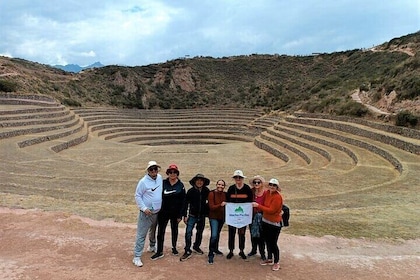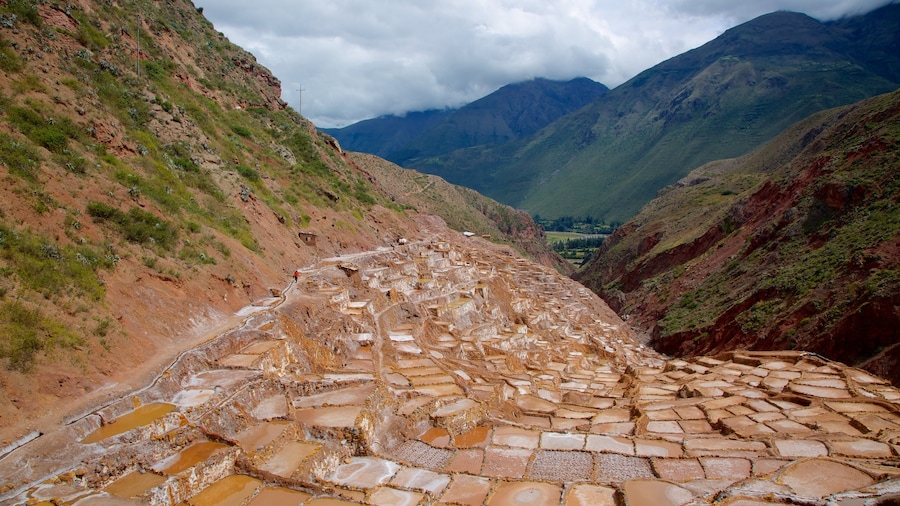One of the region’s most impressive Incan ruins, this intriguing archeological site is known for its grand scale and mysterious purpose.
The Moray Terraces are an enigmatic example of Incan landscaping, a large bowl-shaped depression with concentric terraces. Resembling a grassy Roman or Greek amphitheater, the terraces may have been used as a site for agricultural experimentation.
Before reaching the site, pause to appreciate the terraces from a distance. Considered to be among the Inca’s most stunning designs, the colossal terraces have a haunting presence reminiscent of eerie crop circles. With the Andes Mountain range as backdrop, the terraces look particularly beautiful during the rainy season when the grass turns bright green.
The terraces are divided by a series of staircases, which you can use to descend toward the bottom. Air temperatures between the top and bottom can differ by more than 27 F (15 C) with warmer temperatures at the center and cooler ones around the exterior. It’s believed that the Incas used this temperature gradient to test how different crops grew at various temperatures.
As you walk down the terraces, imagine the effort required to construct them. The Incas transported huge quantities of rich soil from the valley to convert the rocky slopes into flat terraces. Irrigation canals diverted water and nourished the crops. The system was so effective that locals continued to grow crops on this site until a few decades ago.
Walk around the large circular bottom, which sits more than 492 feet (150 meters) below ground level. This area never floods, even during periods of heavy rainfall. It’s unclear whether this is from tunneling beneath the terraces or the result of a natural, porous rock formation under the surface.
Look for six elliptical terraces surrounding the central set of terraces. You’ll also see eight terraced steps, which you can climb to see a higher view over the site.
The Moray Terraces are located 29 miles (46 kilometers) northwest of Cusco and can be reached by bus. Admission is included in the Cusco Tourist Ticket, purchased by many visitors exploring the Sacred Valley.



































